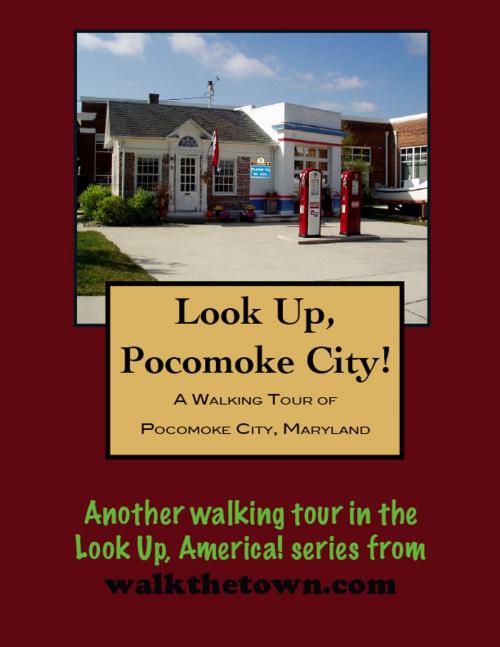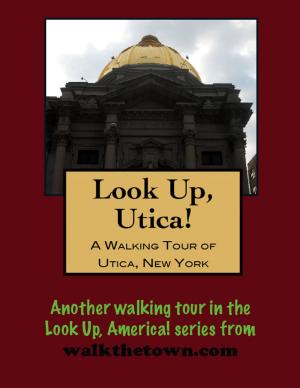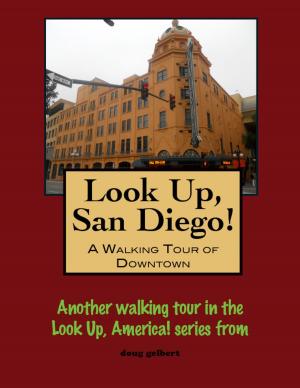| Author: | Doug Gelbert | ISBN: | 9781458163394 |
| Publisher: | Doug Gelbert | Publication: | March 4, 2011 |
| Imprint: | Smashwords Edition | Language: | English |
| Author: | Doug Gelbert |
| ISBN: | 9781458163394 |
| Publisher: | Doug Gelbert |
| Publication: | March 4, 2011 |
| Imprint: | Smashwords Edition |
| Language: | English |
There is no better way to see America than on foot. And there is no better way to appreciate what you are looking at than with a walking tour. This walking tour of Pocomoke City, Maryland is ready to explore when you are. Each walking tour describes historical, architectural landmarks, cultural sites and ecclesiastic touchstones and provides step-by-step directions.
Every tour also includes a quick primer on identifying architectural styles seen on American streets.
The first settlement on the banks of the Pocomoke River here evolved after Edward Stevens set up a ferry service in 1695. The cluster of structures at Steven’s ferry landing came to be known as “Meeting House Landing,” although there is no firm evidence that a primitive church stood on the site. A tobacco warehouse was built at the river and for many years the settlement took the common name, “Warehouse Landing.” It acted, more or less, like a bank, where planters could put their tobacco on deposit and write drafts against it to pay off debts, buy land, or transfer funds for goods and services. After the United States government formed in 1787 and created the dollar as legal tender, the warehouse lost its purpose. The name “Warehouse Landing” fell out of use by 1790, and the old building itself fell into disuse and was left to decay, though it stood as late as 1820.
The land on which Pocomoke City is located originally came from five tracts, four of which appear to have formed a common corner near the ferry landing. An important one was a tract known as “Wooten Underedge”, patented in 1682, but it was over 100 years later -- in the 1790s that about ten small lots were carved out of it and sold; then, about 28 lots were sold 1800-1809, a period of time when, also, about nine lots were sold from an adjacent tract of land, patented in 1670 as “Newtown”. After the warehouse closed, the village took n this historic name.
Newtown developed steadily as a shipping port for surrounding agriculture and lumber interests. In 1878 the name of the town was changed to Pocomoke City, reflecting the river that was the lifeblood of the community. No river in America of comparable width is as deep as the Pocomoke - as deep as 45 feet for a river you can easily throw a baseball across.
In 1880 a railroad bridge spanned the river and Pocomoke City was now on the main line between Philadelphia and Norfolk. A steady stream of travelers and goods flowed to the old river town. Prosperity continued for decades. During World War II, a sewing factory operated in Pocomoke, and, in 1942, the Birds Eye Division of General Foods Corp. constructed a chicken-processing plant which soon had up to 800 employees. The Chincoteague Naval Air Station at nearby Wallops Island relied heavily on Pocomoke City for housing and shopping.
But by the 1960s farm goods were moving by truck and not ships, even on a deep river, and Pocomoke City fell into decline. The Navy base closed, Birds Eye left town. Not only had its economic engines disappeared but so too had much of the town’s physical history. Although Pocomoke City is over 300 years old, it has almost no old structures - fires in 1888, 1892 and 1922 all laid waste to the town’s building stock.
Our walking tour will start on the banks of the historic Pocomoke River...
There is no better way to see America than on foot. And there is no better way to appreciate what you are looking at than with a walking tour. This walking tour of Pocomoke City, Maryland is ready to explore when you are. Each walking tour describes historical, architectural landmarks, cultural sites and ecclesiastic touchstones and provides step-by-step directions.
Every tour also includes a quick primer on identifying architectural styles seen on American streets.
The first settlement on the banks of the Pocomoke River here evolved after Edward Stevens set up a ferry service in 1695. The cluster of structures at Steven’s ferry landing came to be known as “Meeting House Landing,” although there is no firm evidence that a primitive church stood on the site. A tobacco warehouse was built at the river and for many years the settlement took the common name, “Warehouse Landing.” It acted, more or less, like a bank, where planters could put their tobacco on deposit and write drafts against it to pay off debts, buy land, or transfer funds for goods and services. After the United States government formed in 1787 and created the dollar as legal tender, the warehouse lost its purpose. The name “Warehouse Landing” fell out of use by 1790, and the old building itself fell into disuse and was left to decay, though it stood as late as 1820.
The land on which Pocomoke City is located originally came from five tracts, four of which appear to have formed a common corner near the ferry landing. An important one was a tract known as “Wooten Underedge”, patented in 1682, but it was over 100 years later -- in the 1790s that about ten small lots were carved out of it and sold; then, about 28 lots were sold 1800-1809, a period of time when, also, about nine lots were sold from an adjacent tract of land, patented in 1670 as “Newtown”. After the warehouse closed, the village took n this historic name.
Newtown developed steadily as a shipping port for surrounding agriculture and lumber interests. In 1878 the name of the town was changed to Pocomoke City, reflecting the river that was the lifeblood of the community. No river in America of comparable width is as deep as the Pocomoke - as deep as 45 feet for a river you can easily throw a baseball across.
In 1880 a railroad bridge spanned the river and Pocomoke City was now on the main line between Philadelphia and Norfolk. A steady stream of travelers and goods flowed to the old river town. Prosperity continued for decades. During World War II, a sewing factory operated in Pocomoke, and, in 1942, the Birds Eye Division of General Foods Corp. constructed a chicken-processing plant which soon had up to 800 employees. The Chincoteague Naval Air Station at nearby Wallops Island relied heavily on Pocomoke City for housing and shopping.
But by the 1960s farm goods were moving by truck and not ships, even on a deep river, and Pocomoke City fell into decline. The Navy base closed, Birds Eye left town. Not only had its economic engines disappeared but so too had much of the town’s physical history. Although Pocomoke City is over 300 years old, it has almost no old structures - fires in 1888, 1892 and 1922 all laid waste to the town’s building stock.
Our walking tour will start on the banks of the historic Pocomoke River...















